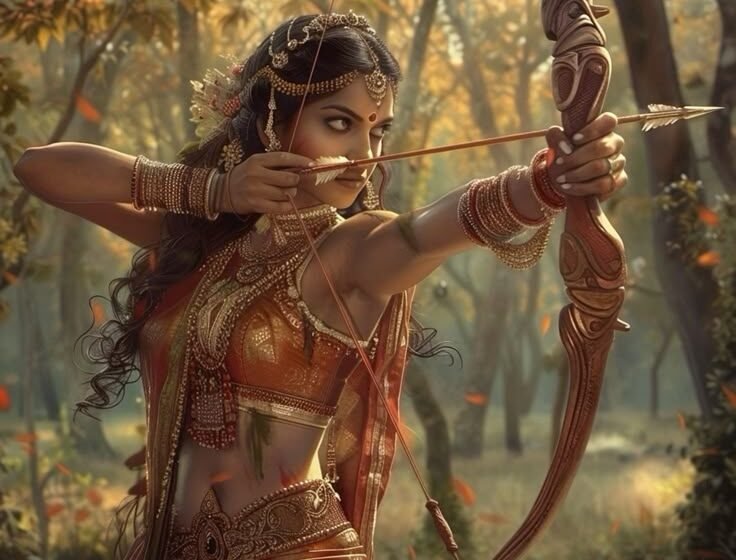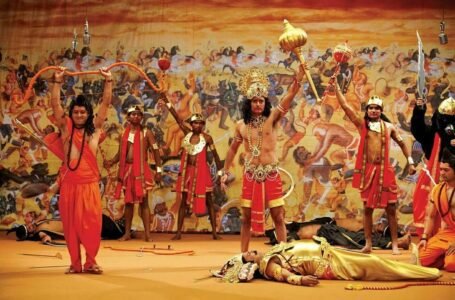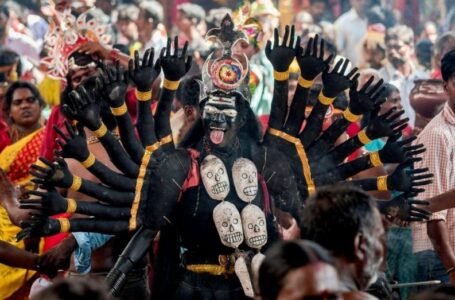Vishpala – The Warrior Queen of the Rigveda

-Anushka Sengupta
The Rigveda is one of the oldest sacred texts still in use today. The Rigveda is more than a spiritual text; it is a cultural and historical record of early Indo-Aryan civilization. The Rigveda weaves together a series of hymns that, although mainly honouring cosmic and divine powers, also occasionally acknowledges human actors and thus provides us, in part, with their stories that transcends the ages. One such figure, for instance, is Vishpala, a warrior woman who was said to have fought in battle, lost a leg, and was provided with an iron prosthetic by the Ashvins, the twin crux of the Vedic healing pantheon. While she is mentioned only briefly, interspersed amongst hymns that laud divine healing acts, Vishpala’s narrative is remarkable. She is notable for being amongst the first recorded female warriors in literature and quite possibly one of the first recorded individuals to receive a prosthetic limb; both exemplifying the norms of recovery, resilience, and warrior identity.
Vishpala is referenced in three hymns of the Rigveda in which her miraculous restoration by the Ashvins is the focus of each verse. This restoration refers to the fitting of Vishpala with an iron leg, to permit her to return to battle after losing her leg, presumably to an injury. None of these hymns linger over her anguish or portray her as hopeless; instead, the hymns celebrate her reintroduction to her martial capacity through divine intervention. The matter-of-fact tone of the verses seems to illustrate that her existence as a female warrior was not an outlier, and an acceptable aspect of Vedic culture. The mere fact that she was courageous, and that the gods cared enough to intervene and assist her after injury puts Vishpala firmly into an exalted place, and implies that ancient Indian society had some awareness and value for women in martial roles.
The term “Vishpala” is also significant in its own right. It’s believed that it comes from “vish,” meaning “settlement” or “clan,” and “pala,” meaning “protector” or “guardian.” This etymology further strengthens the proposition that Vishpala is something more than a fighter–she was a protector of her people; maybe a tribal queen or chieftain put in charge of the protection of her clan. This is especially famous in the context of early Vedic society since their daughters were not only equal and spiritual counterparts to their fathers, but also sometimes even administrators, intellectuals, and warriors. The Rigveda mentions other important women named Ghosha, Lopamudra, and Apala who composed hymns and partook in philosophical discussions, reinforcing the fact that women had access to education, power, and agency in the Vedic times.
The most astounding component of the story is the reference to Vishpala receiving an artificial limb—which would be an iron leg! This reference is revolutionary, because it indicates knowledge of medical science, and a brilliant understanding of science, art, and technology of prosthetics much earlier in history than most studies elsewhere. The appearance of this woman in a text dated to between 1500 and 1200 BCE, also illustrates how Vedic society had a much more nuanced understanding of rehabilitation and inclusion than contemporaneous societies. Rather than being relegated to the margins, or discarded outright, Vishpala was celebrated for her return to battle, becoming a forceful early marker of adaptive resilience. This makes her not only a warrior, but potentially one of the earliest recorded amputees who received rehabilitation and recognition.
Vishpala’s narrative is brimming with symbolism. She embodies courage in moments of adversity, the fighting spirit of a warrior, and the significance of healing and divine assistance. Her tale also reflects themes of restoration and rekindling a person, who despite their injury, re-emerges with strength from divine inspiration. The fact that her re-emergence is linked to the Ashvins is symbolic of the divine grace that descends upon, uplifts, and enables the individual, and when she is depicted as returning to battle, she exemplifies perseverance and fearlessness. The narrative also offers the additional teaching the idea that divine intervention is not exclusively for sages and kings, but it exists for the warrior and for women, who fight to defend their own people.
Vishpala’s story has received attention in recent years in the fields of gender studies, disability studies, and the history of medicine. Feminist scholars feel she is an early emblem of a strong woman outside the bounds of any sort of traditional femininity. In much later writing, we see the roles of women more constrained by social norms, as in our own historical world; however, the Rigveda allows for a society with as many gender categories as possible, as evidenced by Vishpala’s identity as a warrior. Disability rights claimants, and historians of rescue and rehabilitation on behalf of human welfare have taken up her case as a basis for foundational history in prosthetics, and rehabilitation of differently-abled individuals, and attested that ancient human societies had the ability, see in Rockey et al., and willingness to recover or save a wounded warrior, rather than just letting them go. Her story also demonstrates in a subtle way that ancient societies’ experiences of humanity as patriarchy did not always dismiss the differently-abled.
Vishpala’s impact does not end with scripture. There are allusions to her as well in contemporary poetry, historical fiction, and performing arts. Contemporary Indian writers and artists are starting to reinvent her legacy in literature, theater, and visual arts, primarily through feminist revisions of mythology. She has become a role model to many, especially women in militaries, differently-abled individuals, and people advocating for gender equity in history. The story of Vishpala resonates in an era where inclusive representation matters, and her legacy offers a powerful counter-narrative to traditional myths that negate women’s agency and bodily differences.


